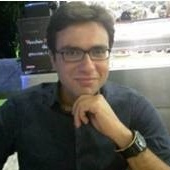Conventional and Novel Processes for the Extraction of Precious Metals from Spent Catalyst and Electronic Equipment
A special issue of Processes (ISSN 2227-9717). This special issue belongs to the section "Catalysis Enhanced Processes".
Deadline for manuscript submissions: 31 July 2024 | Viewed by 6935
Special Issue Editors
Interests: liposomes; microparticles; targeted delivery; pharmaceuticals, stimuli induced delivery; process scale-up; process economic analysis; air quality monitoring; hydrometallurgy; platinum group metals; coatings
Special Issues, Collections and Topics in MDPI journals
Interests: sustainable and eco-friendly solutions for chemical processes; design of chemical process plants from lab-scale to industrial level; expertise in separation processes, scrubbers for gas desulfurization, particle emission control, post-combustion CO2 capture
Interests: liquid–solid extraction processes; separation of precious metals from waste catalyst and electrical equipment; adsorption; nanometric and ultrafine particle capture; industrial applications of electrosprays; design and optimization of gas cleaning systems
Special Issues, Collections and Topics in MDPI journals
Special Issue Information
Dear Colleagues,
Rapid human evolution has improved the quality of our lives through the use of technology. In recent decades, the worldwide production of catalytic converters and electronic equipment has increased exponentially, due to the widespread use of these devices for process automatization, smart working, and strict regulations on vehicle emissions. The market of spent catalyst and waste electronic and electric equipment (WEEE) is worth several billion euros, due to their high precious metals (PM) content, including gold, silver, and elements of platinum group metals, and the rare-earths. However, the economic importance of PM is as high as their supply risk; for this reason, the answer to this problem consists of finding selective methods to extract PM from disposed catalyst and WEEE.
This Special Issue “Conventional and Novel Processes for the Extraction of Precious Metals from Spent Catalyst and Electronic Equipment” will examine all these aspects. In particular, works about the most-used methods such as pyrometallurgy and hydrometallurgy for the separation of precious metals from other non-precious components will be accepted for publication. Moreover, papers related to any innovative refinery methods, including electrochemical methods, will be accepted. This Special Issue will collect works regarding these topics:
- Pyrometallurgy of PM recovery from waste catalyst and electric devices
- Leaching of precious metals from spent catalytic converters
- Selective leaching of precious metals from waste electric and electronic devices
- Sustainable recycling and reuse of waste catalyst and electric devices
- CFD in hydrometallurgical processes
- Economic analysis of precious metals extraction and recovery processes
- Definition of metals leaching models and kinetics
- Metal adsorption kinetics and models
- Solvent extraction of precious metals
- Ion exchange techniques
- Application of electrochemical processes
- Alternative techniques for eco-friendly leaching of precious metals
- LCA analysis of PM recovery from spent catalysts and electronic equipment
Dr. Paolo Trucillo
Prof. Dr. Amedeo Lancia
Prof. Dr. Francesco Di Natale
Guest Editors
Manuscript Submission Information
Manuscripts should be submitted online at www.mdpi.com by registering and logging in to this website. Once you are registered, click here to go to the submission form. Manuscripts can be submitted until the deadline. All submissions that pass pre-check are peer-reviewed. Accepted papers will be published continuously in the journal (as soon as accepted) and will be listed together on the special issue website. Research articles, review articles as well as short communications are invited. For planned papers, a title and short abstract (about 100 words) can be sent to the Editorial Office for announcement on this website.
Submitted manuscripts should not have been published previously, nor be under consideration for publication elsewhere (except conference proceedings papers). All manuscripts are thoroughly refereed through a single-blind peer-review process. A guide for authors and other relevant information for submission of manuscripts is available on the Instructions for Authors page. Processes is an international peer-reviewed open access monthly journal published by MDPI.
Please visit the Instructions for Authors page before submitting a manuscript. The Article Processing Charge (APC) for publication in this open access journal is 2400 CHF (Swiss Francs). Submitted papers should be well formatted and use good English. Authors may use MDPI's English editing service prior to publication or during author revisions.
Keywords
- Solid–liquid extraction
- Leaching
- Adsorption
- Solvent extraction
- Pyrometallurgy
- Precious metals
- Spent catalytic converters
- Definition of kinetics
- Leaching modeling
- Economic analysis
- Waste electrical and electronic equipment







